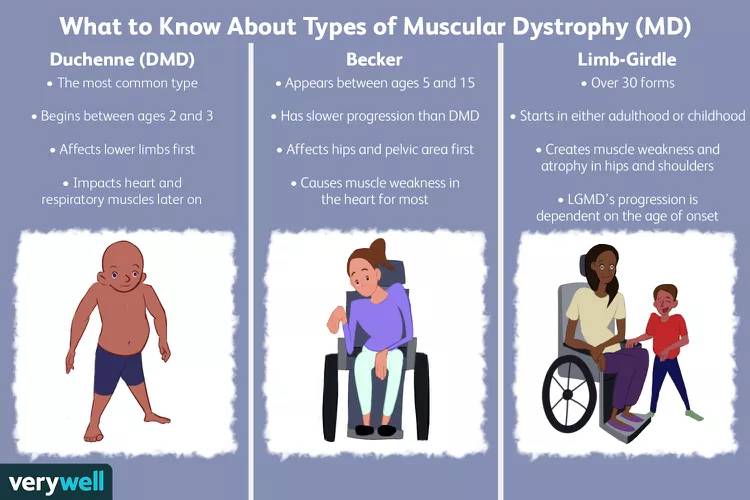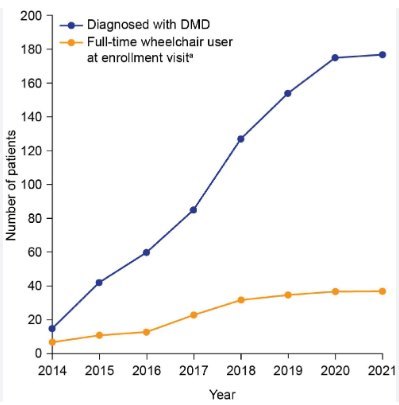Muscular Dystrophy probably treated by high-dose Vitamin D plus muscle rehab
Muscular Dystrophies – low vitamin D might be associated with all 9 types – Aug 2018
Muscular Dystrophy treated by high-dose Coimbra Protocol (Facebook Aug 2019)
" hi good people!
I almost don't enter facebook anymore, but as I started to report on the treatment with vitamin D (Coimbra Protocol), for muscular dystrophy, I couldn't help but report the results of the
I've been doing this treatment for EXACTLY 7 months, and as reported before, some enzymes in my body (CPK) were high, causing my muscles to become inflamed, consequently losing strength (this is the process of the disease)
But yesterday I got the results of the exams I did end of July, and guess
Below are the words of my doctor (Dr. Lucia Schaedler):
"your cpk and dhl that are muscle enzymes, are practically normal, indicating that thank god the inflammatory activity of your disease is stopped"
Imagine, lose strength for 17 years and receive such a news, that the disease is stabilized
Only God knows how happy I am with this, and I wanted to share with you this news, that were people who gave me so many words of support and love since I decided to report about this disease I
PS. With The Disease Stabilized, it does not mean that I will have the muscle strength I had before, and yes that I will not continue to lose, now is to do the next step: Physiotherapy to keep the muscles I have, and continue with the treatment But as for God, nothing is impossible, I will not stop believing that one day I can make my moves again
Fracture in Duchenne Muscular Dystrophy: Natural History and Vitamin D Deficiency – 2016
J Child Neurol. 2016 Aug;31(9):1181-7. doi: 10.1177/0883073816650034
Perera N1, Sampaio H2, Woodhead H3, Farrar M4.
1 Discipline of Paediatrics, School of Women's and Children's Health, UNSW Medicine, University of New South Wales, Sydney, Australia.
2 Department of Neurology, Sydney Children's Hospital, Randwick, Australia.
3 Discipline of Paediatrics, School of Women's and Children's Health, UNSW Medicine, University of New South Wales, Sydney, Australia Department of Endocrinology, Sydney Children's Hospital, Randwick, Australia.
4 Discipline of Paediatrics, School of Women's and Children's Health, UNSW Medicine, University of New South Wales, Sydney, Australia Department of Neurology, Sydney Children's Hospital, Randwick, Australia m.farrar@unsw.edu.au.
The present study examined the natural history of fracture and vitamin D levels in Duchenne muscular dystrophy patients, who are vulnerable to osteoporosis and fractures. Retrospective analysis of a cohort of 48 Duchenne muscular dystrophy patients revealed that 43% of patients experienced ≥1 fracture. Fracture probabilities at ages 6, 9, 12, and 15 years were 4%, 9%, 31%, and 60% respectively, accelerating around the time of ambulation loss (mean age 11.8 ± 2.7 years). Chronic corticosteroid therapy was utilized in 69% of patients and was associated with all vertebral fractures. A history of vitamin D deficiency occurred in 84%, and 35% were currently deficient. Despite chronic vitamin D supplementation, 38% remained deficient. These results demonstrate that osteoporosis and fracture remain major concerns in Duchenne muscular dystrophy. Bone health should be optimized well before loss of ambulation, however current levels of vitamin D supplementation may be inadequate given high levels of deficiency.
📄 Download the PDF from VitaminDWiki
People with DMD need more Vitamin D - meta-analysis Oct 2023
A systematic literature review and meta-analysis of the effectiveness of vitamin D supplementation for patients with Duchenne muscular dystrophy
Neuromuscular Disorders https://doi.org/10.1016/j.nmd.2023.10.008
Highlights
Vitamin D insufficiency or deficiency is prevalent in Duchenne muscular dystrophy
We looked at the effectiveness of vitamin D supplementation across multiple studies
Current doses prevent severe deficiency but are not as effective as intended
No significant link between supplement dose and serum vitamin D levels was found
About 20% of people with Duchenne taking vitamin D supplements are still deficient
We conducted a systematic literature review and meta-analysis on the effectiveness of vitamin D supplementation in maintaining or restoring vitamin D levels in Duchenne muscular dystrophy. Due to a lack of randomised controlled trials, cross-sectional and retrospective and prospective cohort studies were taken as the best available evidence. Inclusion criteria included reporting mean serum vitamin D levels in a supplement-taking group. After screening 102 records; 13 were included in a narrative synthesis and eight of these in a meta-analysis.
We show that current dosing regimens are preventing severe deficiency but are not effective at maintaining sufficient vitamin D levels within the Duchenne population.
Despite high levels of daily vitamin D supplementation (>1000 International Units), at least 20% of people with Duchenne remain vitamin D deficient.
No significant association between dose and serum vitamin D levels was found (r2 = 0.3, p = 0.237). A meta-analysis of mean serum vitamin D levels across eight studies also revealed substantial variability in response to vitamin D supplementation and high heterogeneity (I2 = 99.59 %). These data could impact on an individual's risk and severity of osteoporosis and vertebral fractures.
📄 Download the PDF from VitaminDWiki
Need 3X more vitamin D if DMD - 2019
Increased Rates of Vitamin D Insufficiency in Boys With Duchenne Muscular Dystrophy Despite Higher Vitamin D3 Supplementation – 2019
Glob Pediatr Health. 2019 Mar 15;6:2333794X19835661. doi: 10.1177/2333794X19835661
Bian Q1, McAdam L2, Grynpas M3, Mitchell J1, Harrington J4.
📄 Download the PDF from VitaminDWiki
Vitamin D supplementation is important for many chronic pediatric conditions to help maintain bone health; however, there is little evidence about how disease-related factors affect vitamin D status. The objective was to compare 25-hydroxyvitamin D (25(OH)D) concentrations in 3 pediatric cohorts (Duchenne muscular dystrophy [DMD], systemic lupus erythematosus [SLE], and osteogenesis imperfecta [OI]). In a retrospective study of 367 subjects, children with DMD had increased prevalence of vitamin D insufficiency (25% vs 14% [SLE] and 10% [OI], P = .002), despite higher vitamin D3 supplementation doses. Boys with DMD also had higher weight, fat mass, and lower lean mass percentage Z scores. DMD was associated with having higher rates of vitamin D insufficiency than other comparable pediatric chronic disease cohorts, the effect of which may be modulated by clinical factors such as increased adiposity. While corroboration of these results is needed given baseline differences between the patient groups, greater vitamin D supplementation doses may be required to achieve optimal serum 25(OH)D concentrations in boys with DMD.

DMD - 3X lower response to ~1600 IU Vitamin D supplementation

DMD, Duchenne muscular dystrophy;
OI, osteogenesis imperfecta;
SLE, systemic lupus erythematosus
This study was cited 24 times as of Oct 2023
- Consensus Statement on the Management of Duchenne Muscular Dystrophy in Saudi Arabia During the Coronavirus Disease 2019 Pandemic - Feb 2021 https://doi.org/10.3389/fped.2021.629549 FREE PDF
Since MD is associated with GI problems, they might just need Gut-Friendly D
Half of MD people have Gastrointestional problems
Overview Gut and vitamin D contains gut-friendly information
{include}
Perhaps poor gut ==> low vitamin D ==> MD
The GI problems often precede MD symptoms
"Digestive symptoms can be the first sign of muscular dystrophy. For example, in myotonic muscular dystrophy, digestive symptoms can precede musculoskeletal features. "
- Gastrointestinal manifestations in myotonic muscular dystrophy - 2006 doi: 10.3748/wjg.v12.i12.1821
The risk inheriting MD might be reduced if use gut-friendly Vitamin D
Limb-girdle muscular dystrophy - perhaps caused by a poor gene - a treatment in 2023
The Atlantic Magazine July 2023
The enzyme is known as HMG-CoA reductase halts cholesterol production
Dysfunction in this enzyme causes muscle weakness from both limb-girdle muscular dystrophy and statins.
What Are the Different Types of Muscular Dystrophy? May 2021

Muscular Dystrophy and genes
Reduced response to Vitamin D is often due to poor vitamin D genes, such as:
CYP27A1, CYP2R1 or VDBP
Possibly: Poor Genes ==> Low Vitamin D ==> muscular dystrophy
Unaware of if genes can be changed
The solution might be just give 2X more vitamin D - similar to obese
Sometimes a reduced response to Vitamin D is due to a drug being taken to treat a disease
Wonder if a child with poor MD genes would be less likely to get MD if they had lots of Vitamin D
MD describes a set of 30+ similar problems due to poor inherited genes - WikiPedia
- "The word "dystrophy" comes from the Greek dys, meaning "no, un-" and troph- meaning "nourish""
People with DMD have poor response to Vitamin D - 2017 thesis
📄 Download the PDF from VitaminDWiki
DMD had far less response to Vitamin D

DMD insufficient but not deficient

Mechanisms in Sarcopenia and Muscular Dystrophy - Aug 2015
Editorial: Pathophysiological Mechanisms of Sarcopenia in Aging and in Muscular Dystrophy: A Translational Approach
📄 Download the PDF from VitaminDWiki
Suspect that if MD is treated, that muscle growth will be helped by Sarcopenia techniques
See: Sarcopenia (muscle loss) fought by Vitamin D, exercise and protein - many studies in VitaminDWiki
- Exercise, Vitamin D - with loading dose, Protein, Calcium, Omega-3
Electrical muscle stimulator rehabilitation will probably also help
VitaminDWiki - Multiple Sclerosis and Vitamin D ~ 50,000 Facebook members in 13 languages – Jan 2017
Life Extension Magazine Overview of Muscular Dystrophy - Dec 2020
Nutrients that help
Coenzyme Q10 (anti-oxidant - sometimes combined with Vitamin D)
Resveratrol (ncreases Vitamin D in cells),
Creatine (builds muscles)
Omega-3 (builds muscles)
Vitamin D
Glutamine
L-Carnitine
Green tea
Vitamin E and Selenium (anti-oxidants)
N-acetylcysteine (antioxidant which decreases muscle damage)
VitaminDWiki – Muscles and Vitamin D - many studies contains
{include}
{include}
95% of MD patients had low Vitamin D - 2019
Vitamin D in Patients With Duchenne Muscular Dystrophy Free PDF
Question: Low D ==> MD, MD ==> Low D, or X ==> Low D and MD
10X increase in DMD in 16 years - 2020
Patient demographics and characteristics from an ambispective, observational study of patients with duchenne muscular dystrophy in Saudi Arabia - Sept 2020

📄 Download the PDF from VitaminDWiki
Vitamin K2: A Cure for Muscular Dystrophy?- Video July 2022
MD results from too much Calcium in the muscles.
Vitamin K2 proven to reduce calcium in soft tissue
Overview of muscular dystrophies (Glucocorticoids decrease Vitamin D getting to cells) - Sept 2023
Great summary
📄 Download the PDF from VitaminDWiki
Note: Glucocorticoids are often used to Treat MD.
Glucocorticoids decrease active Vitamin D (not blood level) by changing activation of the CYP24A1 gene
"Glucocorticoids are widely used in the treatment of Duchenne Muscular Dystrophy (DMD)... They are considered a standard part of care for most patients with DMD, with clinics often prescribing these medications as soon as patients are diagnosed"
New $$$ Duchenne MD drug - fewer side effects than Corticosteroids - Oct 2023
2-6 mg/kg/d for a period of up to 48 months. Assuming 4 mg and 10 kg child ==> 40 mg/day
10 mg costs $140 (research $), so it might be EXTREMELY EXPENSIVE
FDA approved Duvyzat (it reduced the decline of speed of MD children to climb stairs over 18 months) - March 2024
Duvyzat approved by the US FDA
take twice a day for life
"The most common side effects of Duvyzat are diarrhea, abdominal pain, a decrease in platelets—which can lead to increased bleeding—nausea/vomiting, an increase in triglycerides (a type of fat in the body) and fever"
